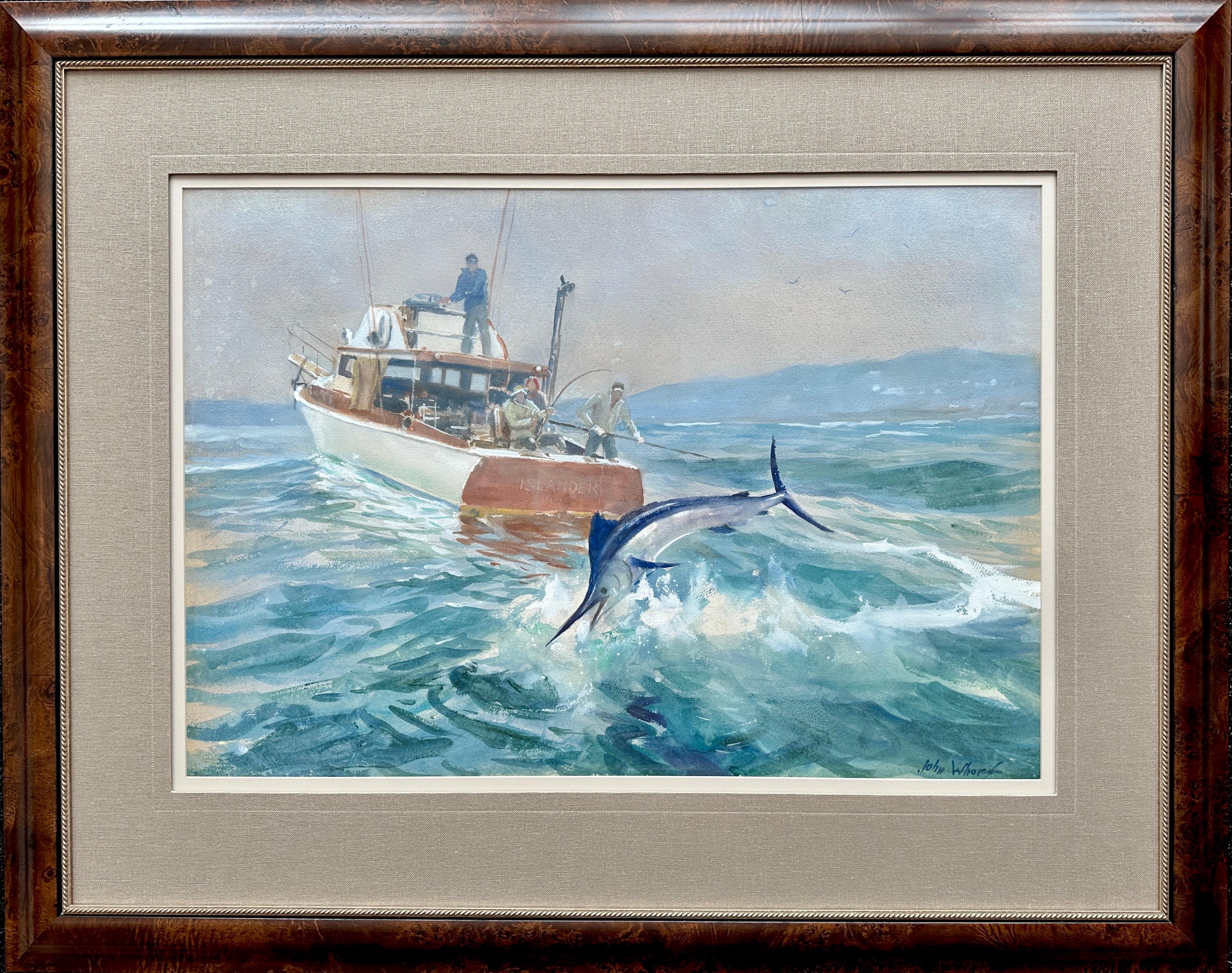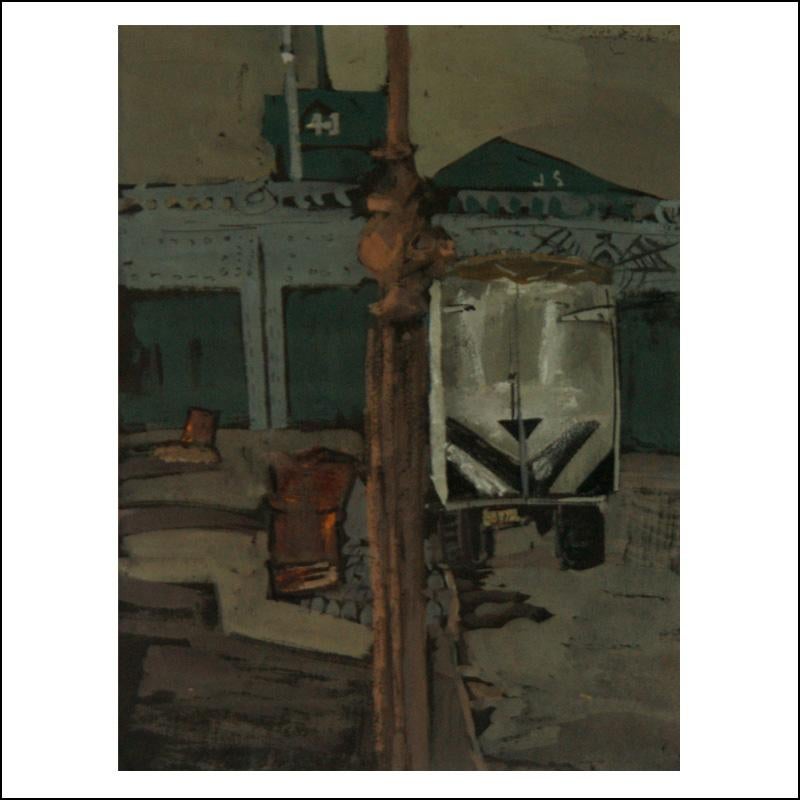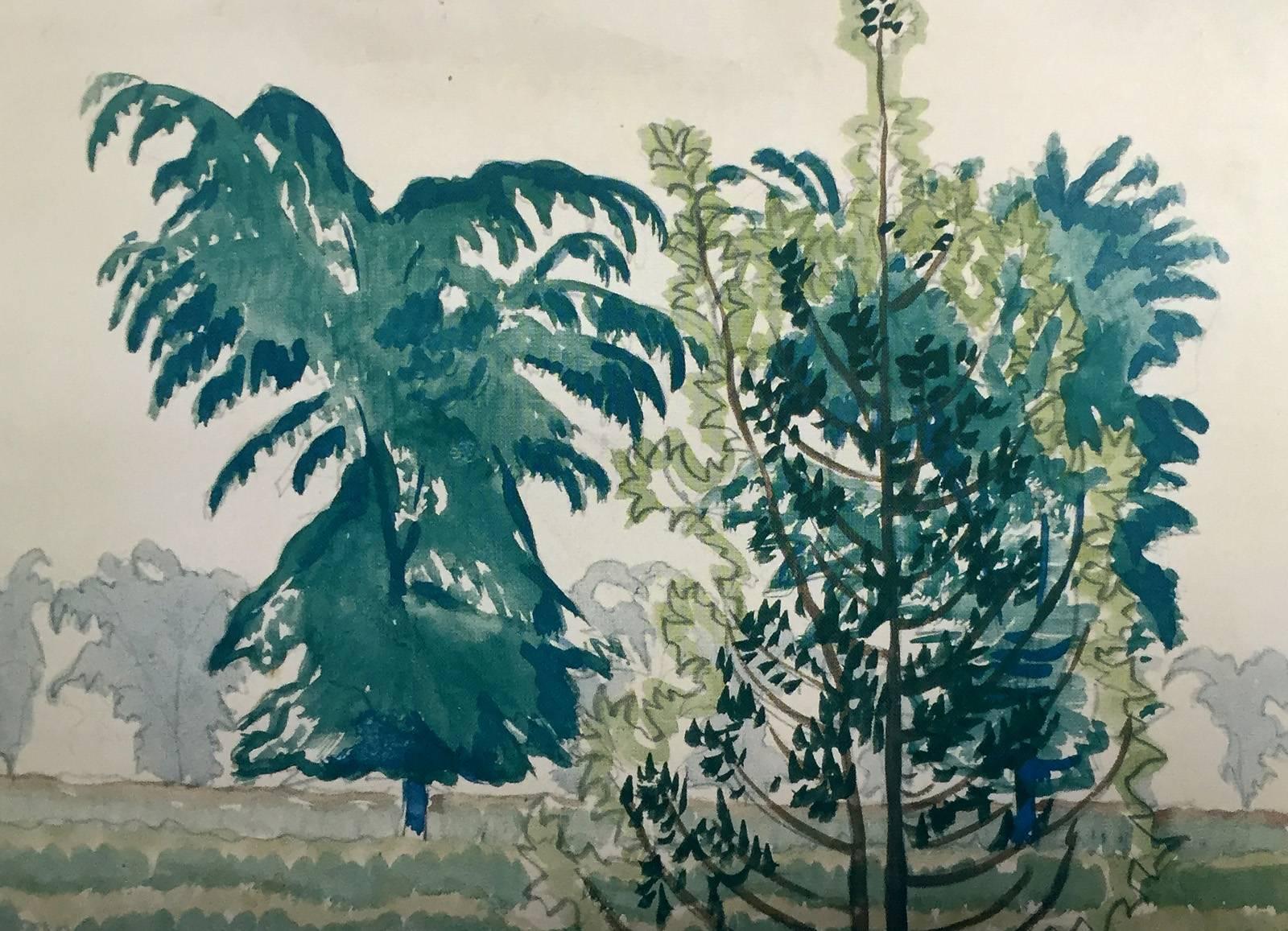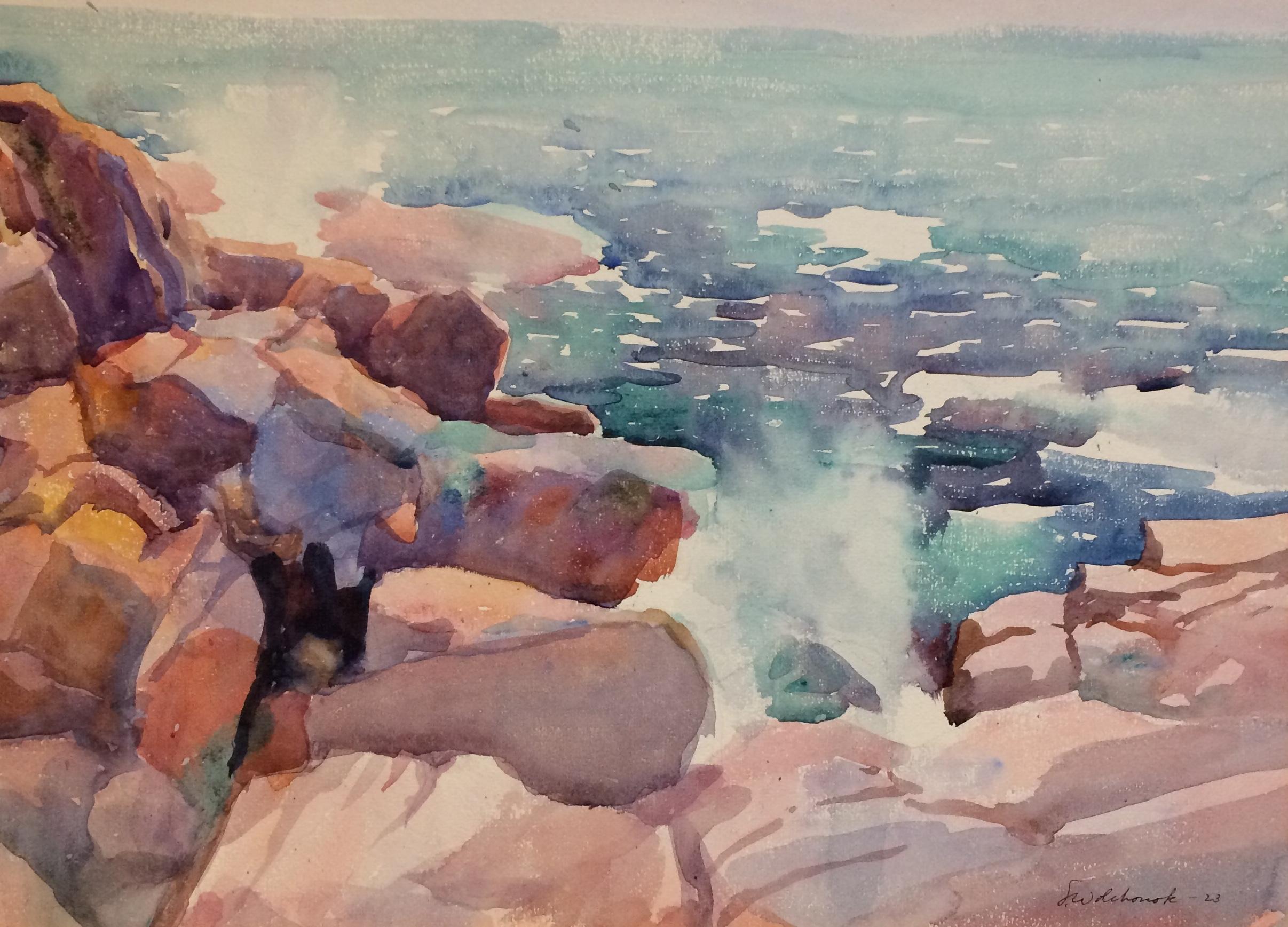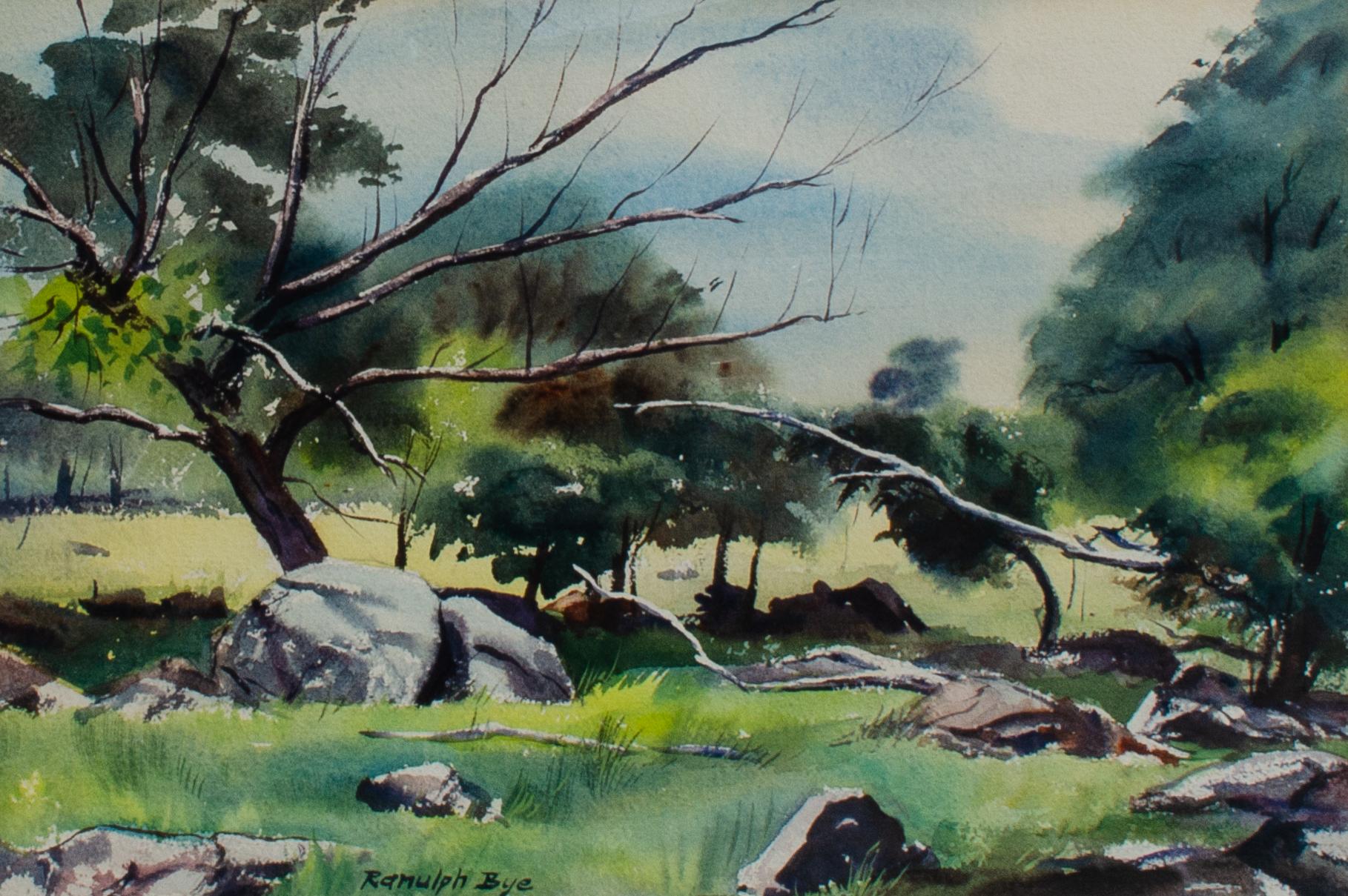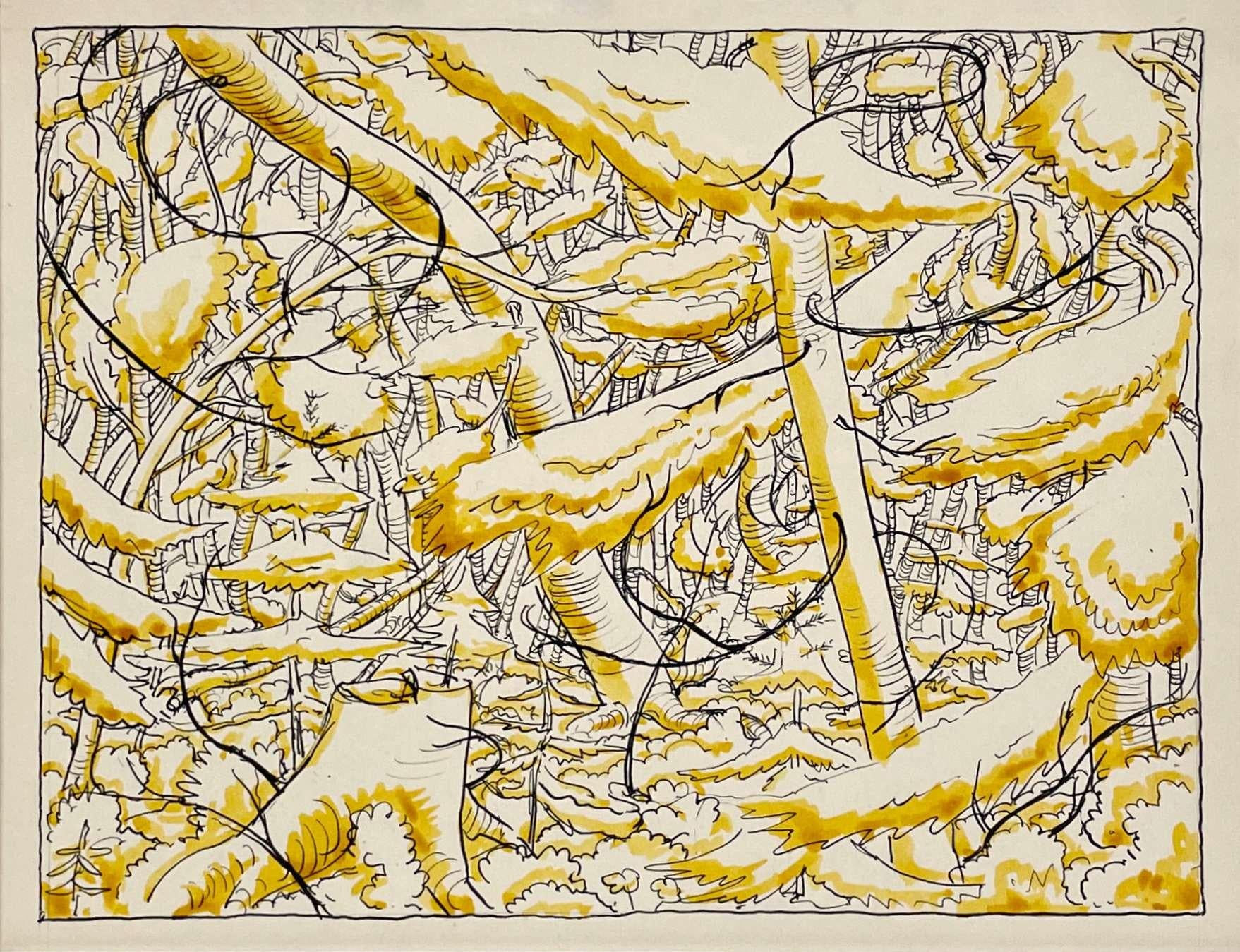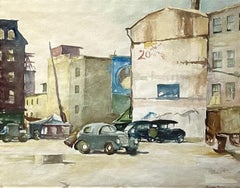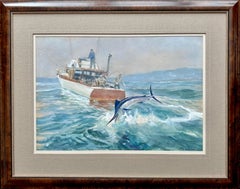
Waterfront Industrial Scene in Watercolor, Mid-Century
View Similar Items
1 of 6
Sadie Van Patten HallWaterfront Industrial Scene in Watercolor, Mid-Century
About the Item
- Creator:Sadie Van Patten Hall (1884 - 1967, American)
- Dimensions:Height: 23 in (58.42 cm)Width: 29.5 in (74.93 cm)Depth: 1.25 in (3.18 cm)
- Medium:
- Movement & Style:
- Period:
- Condition:Vintage wear.
- Gallery Location:San Francisco, CA
- Reference Number:Seller: 721051stDibs: LU29822261013
You May Also Like
- Untitled (Cars)Located in Los Angeles, CAThis painting is part of our exhibition America Coast to Coast: Artists of the 1940s. Untitled (Cars), 1940, watercolor on paper, signed and dated lower right, 15 x 18 1/2 inches, ...Category
1940s American Modern Drawings and Watercolor Paintings
MaterialsPaper, Watercolor
- Leaping Marlin (with fisherman on the boat Islander) by John WhorfBy John WhorfLocated in Hudson, NYJohn Whorf captures one of the thrilling moments of fishing in this watercolor – when the fish is on the line, but still trying to escape. One of the fastest fish in the world, marlin fishing...Category
1950s American Modern Animal Drawings and Watercolors
MaterialsWatercolor, Paper
- "Rail Yard" Urban Industrial WPA American Scene Drawing NYC Mid-CenturyBy Joseph SolmanLocated in New York, NY"Rail Yard" Urban Industrial WPA American Scene Drawing NYC Mid-Century. Initialed "JS" upper right Solman was a pivotal figure in the development of 20th century American art. He ...Category
1930s American Modern Landscape Drawings and Watercolors
MaterialsGouache, Paper
- California Impressionist Landscape Painting Framed 19th Century Rare PurpleLocated in Buffalo, NYAn original American impressionist figurative watercolor of a California coastline with trees.Category
Early 1900s American Modern Landscape Drawings and Watercolors
MaterialsPaper, Watercolor
- Untitled (Trees)By Charles E. BurchfieldLocated in Buffalo, NYAn original watercolor on paper by American modernist Charles E. Burchfield, created in 1916. This work comes in an archival frame presentation and has been authenticated by the Bur...Category
1910s American Modern Landscape Drawings and Watercolors
MaterialsWatercolor, Paper
- "Bass Rocks, Gloucester, Massachusetts" Watercolor Bright SeascapeBy Louis WolchonokLocated in New York, NYLouis Wolchonok (1898 - 1973) Bass Rocks, Gloucester, Massachusetts, 1923 Watercolor on wove watercolor stock paper 13 x 17 3/4 inches Signed and dated lower right corner: LWolchonok...Category
1920s American Modern Landscape Drawings and Watercolors
MaterialsPaper, Watercolor

